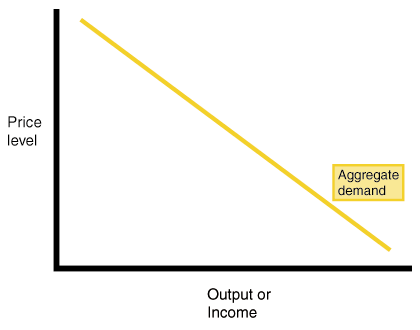Notes (2/12/15) - AGGREGATE SUPPLY
- The level of real GDP (GDPR) that firms will produce at each price level (PL)
Long Run v. Short Run
- Long Run: time where input prices are flexible and adjust to change in price level
- level GDP supplied is independent of the price level
- Short Run: time where input prices are sticky and don't adjust to change in price level
- level of GDP supplied is directly related to price level
Long Run Aggregate Supple (LRAS)
- marks level of full employment in the economy (analogous to PPC)
- because input is completely flexible in the long run, changes in price level do not change firms real profits and therefore do not change firms' level of of output
- LRAS is vertical at the economy's level of full employment
Short Run Aggregate Supply (SRAS)
- because input prices are sticky in the short-run, the SRAS is upward sloping
- changes in SRAS
- increases in SRAS is seen as shift to right
- decreases in SRAS is seen as shift to left
- key to understanding shifts is per unit cost of production
- per-unit cost of production = total input cost / total output
Determinants of SRAS
- input prices
- productivity
- legal institution environment
Input Prices
- domestic resource prices
- wages (75% of all business prices)
- cost of capital
- raw materials (commodity prices)
- foreign resource power
- Strong money = low foreign resource prices
- Weak money = high foreign resource prices
- market power
- monopolies and cartel that control resources and control prices of those resources
- increase in resource price = SRAS shift left
- decrease in resource prices = SRAS shift right
Productivity
- total output/total inputs
- more productivity = low unit production cost (AS shift right)
- less productivity = high unit production cost (AS shift left)
Legal Institution Environment
- Taxes and subsidies
- taxes ($ to the govt.) on business increase per-unit production cost (AS shift left)
- subsidies ($ from the govt.) to business reduce per-unit production cost (AS shift right)
- Government regulation
- government regulation creates a cost of compliance (AS shift left)
- deregulation reduces compliance cost (AS shift right)


